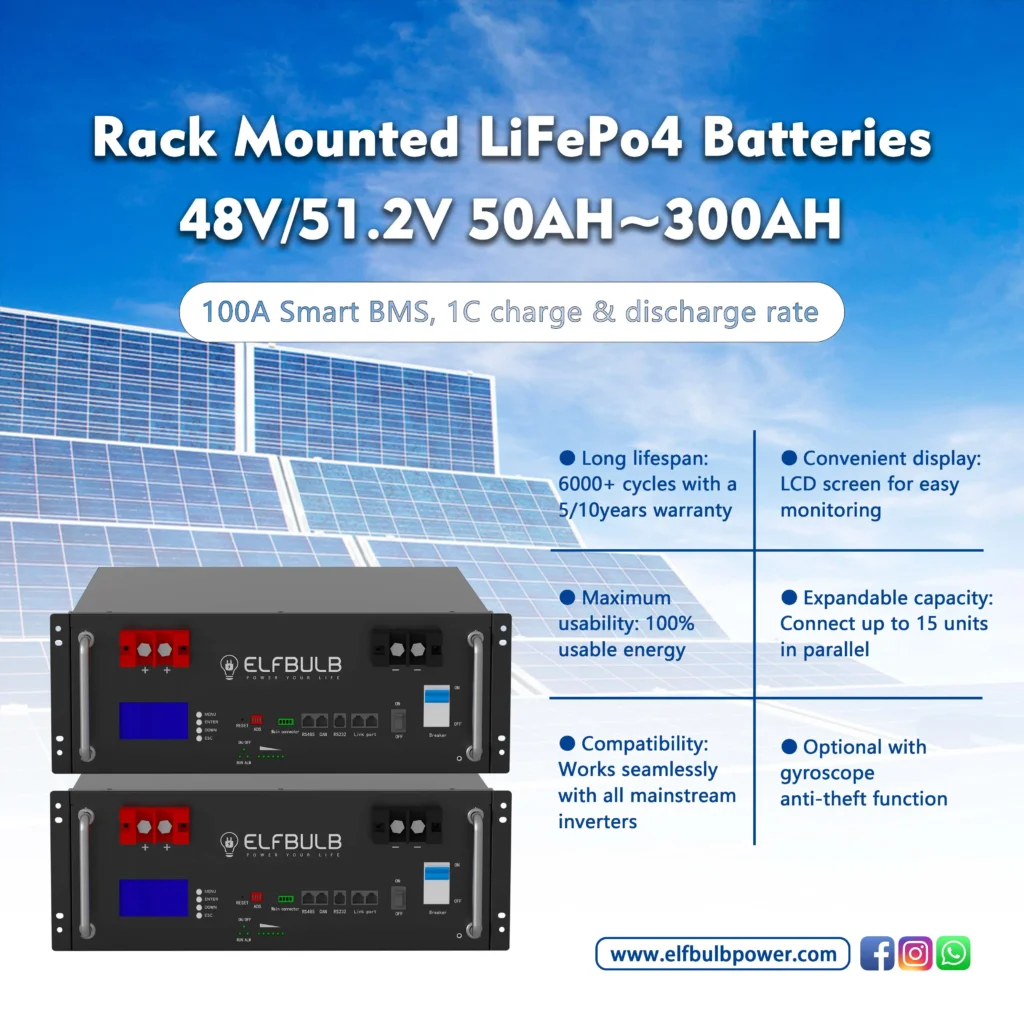Let’s explore the differences between rack-mounted batteries and wall-mounted batteries, two common energy storage solutions. Whether you’re a tech enthusiast or a business owner seeking the right battery setup, understanding these options is essential.
Rack-Mounted Batteries
- Definition: Rack-mounted batteries are designed to be installed on racks or shelves within a designated space. They are commonly used in data centers, telecom facilities, and industrial settings.
- Battery Technology:
- Vented Lead-Acid (VLA) Batteries: These are typically large, flooded or wet-cell batteries used in very large UPS systems. VLA batteries are always rack-mounted.
- Valve-Regulated Lead-Acid (VRLA) Batteries: These can be mounted on racks or in cabinets. VRLA batteries are more common and versatile.
- Size Considerations:
- Rack-mounted configurations are favored for larger batteries (both physically and in terms of ampere-hour rating). Typically, once a battery unit exceeds 100 AH, rack mounting becomes practical.
- Cabinets are more suitable for smaller battery units.
- Number of Cells and Strings:
- Rack-mounted batteries are ideal for systems with high DC voltages (e.g., 250 to 800 Volts). The decision involves analyzing reliability and maintainability.
- Redundancy and the number of failure points play a crucial role.
- Location:
- Rack-mounted batteries are often installed in battery rooms, where access is restricted to authorized personnel.
- Smaller UPS systems (up to 250 kVA) may be directly installed in the computer room alongside their respective battery cabinets.
- Hazards:
- Electrical Hazard: Open rack batteries expose potentially lethal voltage, necessitating installation in restricted-access battery rooms.
- Fire Hazard: Proper placement and safety measures are critical.

Wall-Mounted Batteries
- Definition: Wall-mounted batteries are directly attached to the wall, offering a space-saving solution.
- Features:
- Space Efficiency: Wall-mounted batteries maximize floor space, making them ideal for smaller environments.
- Visibility and Security: The front panel typically has a solid glass door, allowing visibility of internal equipment while ensuring security.
- Ease of Installation: Wall-mounted batteries are straightforward to install and fix in place.

In summary, if you have limited space and need a compact solution, consider wall-mounted batteries. For larger setups and flexibility, rack-mounted batteries are the way to go.
Remember to choose based on your specific needs and available space. Happy powering! 🌟


